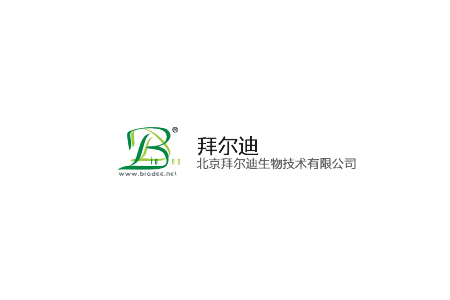

貨號
產(chǎn)品規(guī)格
售價(jià)
備注
BN41655R-50ul
50ul
¥1486.00
交叉反應(yīng):Human,Mouse,Rat(predicted:Dog,Pig,Cow) 推薦應(yīng)用:WB,IHC-P,IHC-F,IF,Flow-Cyt,ELISA
BN41655R-100ul
100ul
¥2360.00
交叉反應(yīng):Human,Mouse,Rat(predicted:Dog,Pig,Cow) 推薦應(yīng)用:WB,IHC-P,IHC-F,IF,Flow-Cyt,ELISA
BN41655R-200ul
200ul
¥3490.00
交叉反應(yīng):Human,Mouse,Rat(predicted:Dog,Pig,Cow) 推薦應(yīng)用:WB,IHC-P,IHC-F,IF,Flow-Cyt,ELISA
產(chǎn)品描述
| 英文名稱 | Oct-3/Oct-4 |
| 中文名稱 | 胚胎干細(xì)胞關(guān)鍵蛋白抗體 |
| 別 名 | POU domain, class 5, transcription factor 1;Oct-3/4; Oct-4A; Oct4A; Oct 4A; Octamer-binding transcription factor 3; Octamer-4; Octamer-3; Oct-3; NF-A3; Otf-3; Otf3; MGC22487; Oct 3; Oct 4; OCT3; Oct4; Octamer binding protein 3; Octamer binding protein 4; Octamer binding transcription factor 3; Octamer-binding protein 3; Octamer-binding protein 4; OTF 3; OTF 4; OTF-3; OTF3; OTF4; PO5F1_HUMAN; POU class 5 homeobox 1; POU domain class 5 transcription factor 1; POU domain transcription factor OCT4; POU type homeodomain containing DNA binding protein; POU5F1; POU5F1. |
| 研究領(lǐng)域 | 細(xì)胞生物 免疫學(xué) 染色質(zhì)和核信號 干細(xì)胞 表觀遺傳學(xué) |
| 抗體來源 | Rabbit |
| 克隆類型 | Polyclonal |
| 交叉反應(yīng) | Human, Mouse, Rat, (predicted: Dog, Pig, Cow, ) |
| 產(chǎn)品應(yīng)用 | WB=1:500-2000 ELISA=1:5000-10000 IHC-P=1:100-500 IHC-F=1:100-500 Flow-Cyt=1ug/Test IF=1:100-500 (石蠟切片需做抗原修復(fù)) not yet tested in other applications. optimal dilutions/concentrations should be determined by the end user. |
| 分 子 量 | 39kDa |
| 細(xì)胞定位 | 細(xì)胞核 |
| 性 狀 | Liquid |
| 濃 度 | 1mg/ml |
| 免 疫 原 | KLH conjugated synthetic peptide derived from human OCT-4:201-300/360 |
| 亞 型 | IgG |
| 純化方法 | affinity purified by Protein A |
| 儲 存 液 | 0.01M TBS(pH7.4) with 1% BSA, 0.03% Proclin300 and 50% Glycerol. |
| 保存條件 | Shipped at 4℃. Store at -20 °C for one year. Avoid repeated freeze/thaw cycles. |
| PubMed | PubMed |
| 產(chǎn)品介紹 | Expression of the POU-domain transcription factor Octamer-4 (Oct-4) is widely regarded as a hallmark of pluripotent stem cells. The relationship of Oct-4 to pluripotent stem cells is indicated by its tightly restricted expression to undifferentiated pluripotent stem cells. Upon differentiation to somatic lineages, the expression of Oct-4 disappears rapidly. Unlike the majority of pluripotent stem cell markers, the biological role of Oct-4 has been well characterized. Studies performed in mice point to the critical role of Oct-4 in the establishment and/or maintenance of pluripotent stem cells in an uncommitted state. Function: Transcription factor that binds to the octamer motif (5'-ATTTGCAT-3'). Forms a trimeric complex with SOX2 on DNA and controls the expression of a number of genes involved in embryonic development such as YES1, FGF4, UTF1 and ZFP206. Critical for early embryogenesis and for embryonic stem cell pluripotency. Subunit: Interacts with UBE2I and ZSCAN10. Interacts with PKM2. Interacts with WWP2. Subcellular Location: Cytoplasm. Nucleus. Note=Expressed in a diffuse and slightly punctuate pattern. Tissue Specificity: Expressed in developing brain. Highest levels found in specific cell layers of the cortex, the olfactory bulb, the hippocampus and the cerebellum. Low levels of expression in adult tissues. Post-translational modifications: Sumoylation enhances the protein stability, DNA binding and transactivation activity. Sumoylation is required for enhanced YES1 expression. Ubiquitinated; undergoes 'Lys-63'-linked polyubiquitination by WWP2 leading to proteasomal degradation. ERK1/2-mediated phosphorylation at Ser-111 promotes nuclear exclusion and proteasomal degradation. Phosphorylation at Thr-235 and Ser-236 decrease DNA-binding and alters ability to activate transcription. Similarity: Belongs to the POU transcription factor family. Class-5 subfamily. Contains 1 homeobox DNA-binding domain. Contains 1 POU-specific domain. SWISS: P20263 Gene ID: 5460 Database links: Entrez Gene: 5460 Human Entrez Gene: 18999 Mouse Omim: 164177 Human SwissProt: Q01860 Human SwissProt: P20263 Mouse Unigene: 249184 Human Unigene: 632482 Human Unigene: 646545 Human Unigene: 17031 Mouse Unigene: 161748 Rat Important Note: This product as supplied is intended for research use only, not for use in human, therapeutic or diagnostic applications. |